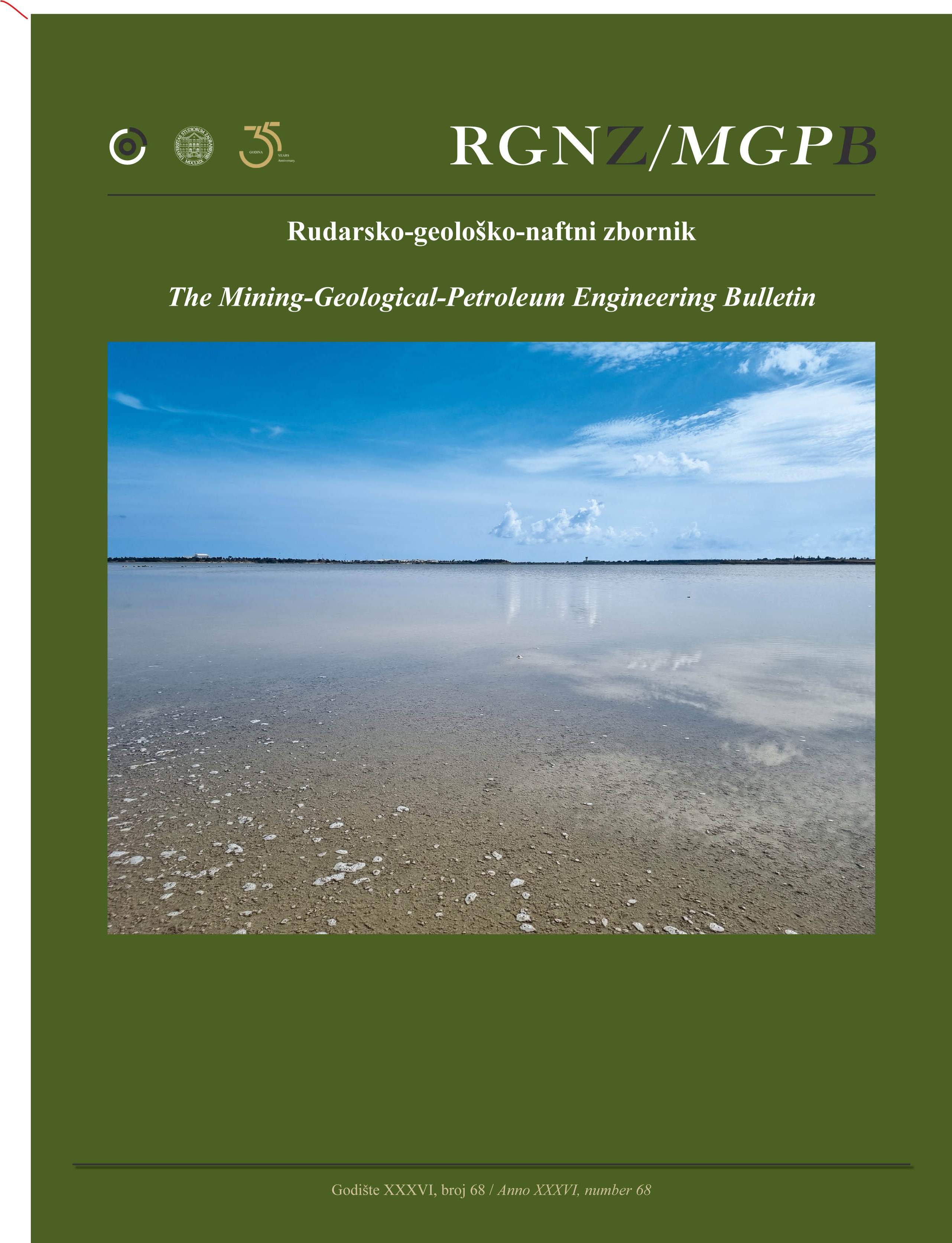Determination of Lakebed Sediment Distribution based on Underwater Electrical Resistivity Tomography Data
DOI:
https://doi.org/10.17794/rgn.2024.2.9Keywords:
underwater ERT, resistivity modelling, inversion, gravel depositAbstract
Electrical resistivity tomography (ERT) in an aquatic environment is usually measured using two basic systems. One system uses floating electrodes, which is usually applied in shallow water, and the other uses underwater cables with integrated electrodes, which is often carried out as a mobile system. The aim of this research was to test an underwater ERT measurement with floating cables on the water surface, but with electrodes submerged at the water bottom. This type of cable spread makes it possible to lay all the electrodes vertically to the bottom without the distance between them being reduced by the uneven topography and various underwater obstacles. Prior to the field survey that was conducted in a 40 m – deep lake, the response of common electrode arrays was tested using synthetic models. Two models were used that correspond to the geological condition in the field, higher resistivity bodies in a lower resistivity environment and a model with inverse relationship of resistivity to the first one. The Wenner‑Schlumberger and dipole-dipole arrays resolved the resistivity range, size and shape of the bodies very well and were therefore used in the field. The field data quality was very good and it was shown that ERT measurements in freshwater depths of more than 40 metres can provide very good results. As expected from the modelling, the dipole-dipole array led to a high-resolution resistivity model that enabled the characterisation of the lakebed sediments.
Downloads
Published
How to Cite
Issue
Section
License
Copyright (c) 2024 Jasna Orešković, Saša Kolar, Ana Brcković, Ivica Pavičić

This work is licensed under a Creative Commons Attribution 4.0 International License.
Creative Commons-BY
Authors who publish with this journal agree to the following terms:
In agreeing this form, you certify that:
- You read the ethical codex of the RGN zbornik available at journal web.
- You submitted work is your original work, and has not previously been published and does not include any form of plagiarism.
- You own copyright in the submitted work, and are therefore permitted to assign the licence to publish to RGN zbornik.
- Your submitted work contains no violation of any existing copyright or other third party right or any material of an obscene, libellous or otherwise unlawful nature.
- You have obtained permission for and acknowledged the source of any illustrations, diagrams or other material included in the work of which you are not the copyright owner.
- You have taken due care to ensure the accuracy of the work, and that, to the best of your knowledge, there are no false statements made within it.
- All co-authors of this submitted work are aware of, and in agreement with, the terms of this licence and that the submitted manuscript has been approved by these authors.
Publication licence
You retain copyright in your submitted work, according to journal license policy (CC-BY). By signing this form you agree that RGN zbornik may publish it under the publication licence. In summary the licence allows the following:
Anyone is free:
- To copy, distribute, display, and perform the work.
- To make derivative works.
Under the following conditions:
- The original author must always be given credit.
- The work may not be used for commercial purposes.
- If the work is altered, transformed, or built upon, the resulting work may only be distributed under a licence identical to this one.
Exceptions to the licence
In addition to publishing the work printed under the above licence, RGN zbornik will also enable the work to be visible online.
The journal editorial can change the licence rules anytime but it cannot retroactively restrict author(s) rights.


